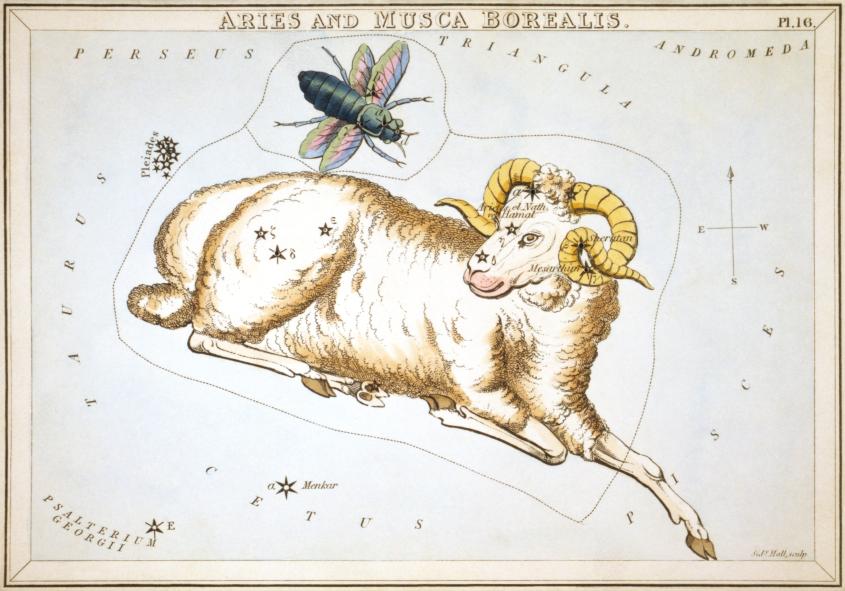Aries (Ram)
The Ram is a rather small constellation, but it is very distinct. Its origins go back to the myth of the golden fleece in the Greek mythology.
Despite its small size, Aries was of great importance some 2500 years ago, since the sun moved from the southern to the northern hemisphere while being located in Aries. Hence, this Vernal (Spring) Equinox is known as First Point of Aries. It marks the beginning of spring and is located in Fishes today.
Aries also contains Musca Borealis (the Northern Fly), a now discarded constellation. It was created by Petrus Plancius in 1612, a Dutch-Flemish astronomer, cartographer, and clergyman. Petrus originally called it Apes (bees), but it was renamed by Jakob Bartsch in 1624 in order to avoid confusion with another constellation.
Despite its small size, Aries was of great importance some 2500 years ago, since the sun moved from the southern to the northern hemisphere while being located in Aries. Hence, this Vernal (Spring) Equinox is known as First Point of Aries. It marks the beginning of spring and is located in Fishes today.
Aries also contains Musca Borealis (the Northern Fly), a now discarded constellation. It was created by Petrus Plancius in 1612, a Dutch-Flemish astronomer, cartographer, and clergyman. Petrus originally called it Apes (bees), but it was renamed by Jakob Bartsch in 1624 in order to avoid confusion with another constellation.
This constellation belongs to the zodiac. Its time of the year is between March 21 and April 20.
It's brightest star is Hamal (α Arietis).
Neighboring constellations are Pisces, Cetus, Taurus, Perseus, and Triangulum.
Have a look at our full list of all constellations.
